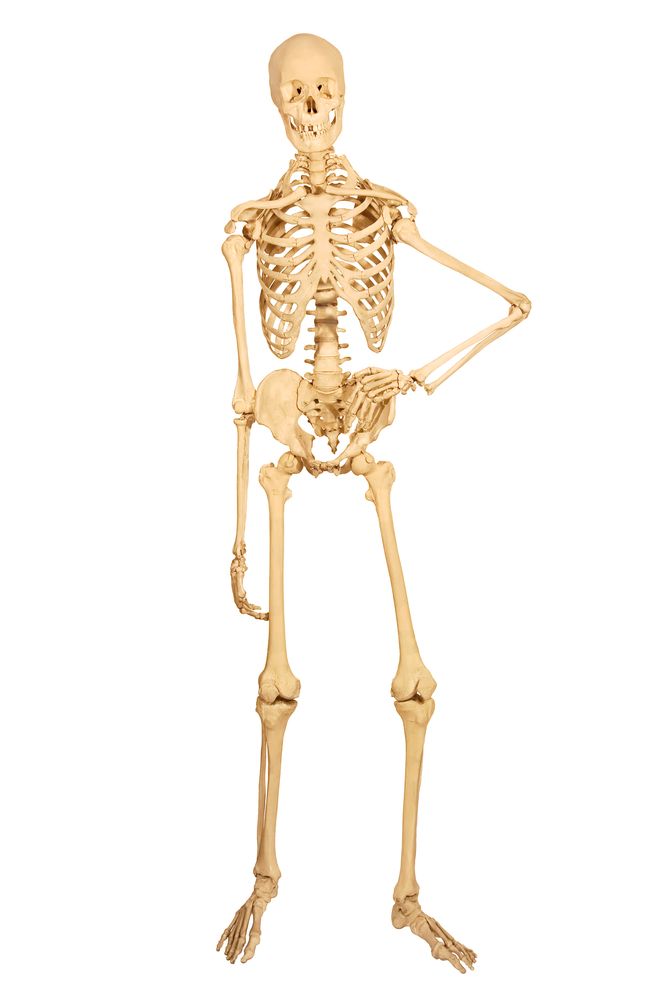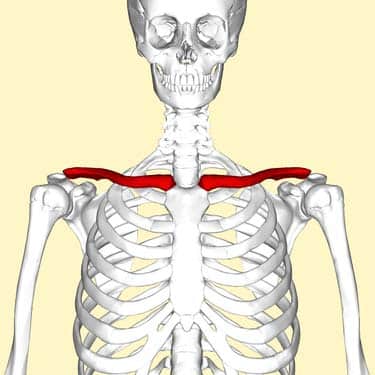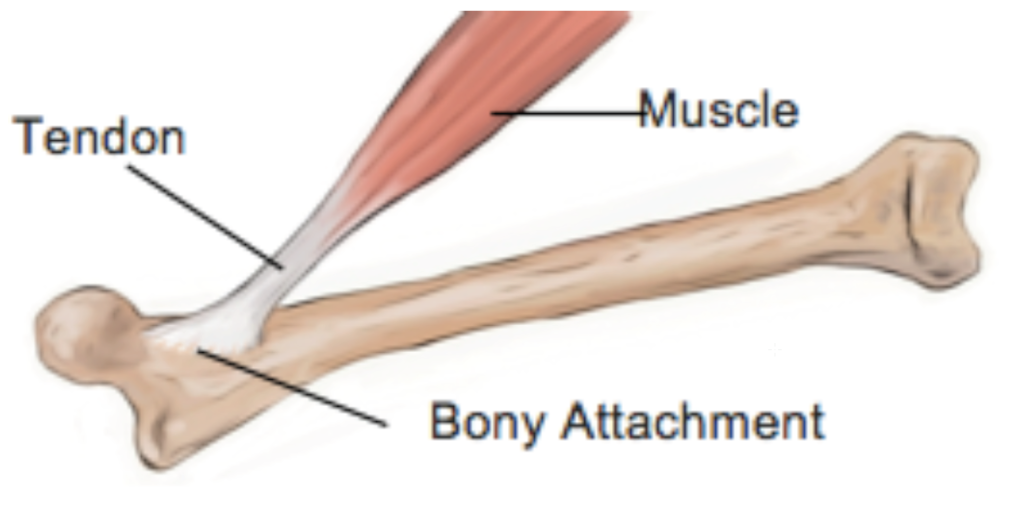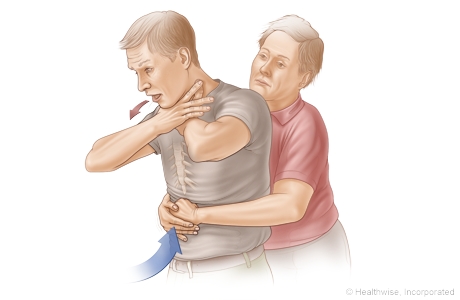How did the ancient Egyptians preserve the dead?
They mummified them with salt and other chemicals.

A human has around 270 bones at birth, but because some bones fuse together, the number of bones an adult has is less. How many bones does an adult have?

206 bones
(Remind me to show the deer skull!)
How many muscles does a human have?
More than 640 muscles.
p.55
What percentage of your body is made up of water?
60%
p.86
What system is related to breathing?
The respiratory system.
p.103
Aristotle observed maggots coming out of meat and came up with the theory of spontaneous generation. What is spontaneous generation, and why was he incorrect?
Spontaneous generation means that life can come from non-living things. He was wrong because the maggots didn't come from the meat itself but instead came from eggs that flies laid on the meat.
p.24
The bone colored red below is often referred to as the "collarbone". What is its real name?

Clavicle
The strongest muscle in our body can sometimes be the hardest to control. What is it?
The masseter (jaw muscle that allows you to open and close your mouth)

p.56
A deficiency what vitamin can cause Scurvy?
Vitamin C
p.95
When you breathe, air passes into your lungs by going through the part labeled as "D" in the diagram below. What is that "part D" called?

Trachea
p.104
Why did the Hebrew people (those who followed God in the Bible) typically have good health?
Because they followed God's laws in the Old Testament.
Even though your bones store calcium, you need to eat sources of calcium every day. Why is this?
Because if you don't eat enough calcium, your body will take some from your bones' calcium stores, making your bones weaker and more susceptible to breaking.
p.39
What is the largest muscle?
the gluteus maximus

p.56
Some vitamins are water-soluble
and some are fat-soluble.
What does this mean?
Vitamins that dissolve in water are not stored by your body.
Fat-soluble vitamins are stored in your body's fat.
p.94-95
What are the "strings" in your larynx called?
vocal cords
p.108
Who invented the compound microscope?
Robert Hooke
p.25
Where are the smallest bones in your body?
In your ear.
p.47
Name the illness that causes your masseter muscle to tighten, not allowing you to open your mouth (also known as "lockjaw")?
tetanus
p.57
Name a benefit of Vitamin C.
- growth and repair of tissues
- helps burns and wounds heal
- keeps your teeth and gums healthy
- helps prevent illness or speeds the healing
- helps the body make collagen (a substance that is part of your bones, ligaments, and tendons)
p.95
Name the harmful, addictive chemical in cigarette smoke.
nicotine
p.112
How did the word "cell" come to be?
When Robert Hooke viewed a cork under a microscope, he observed that it was made up of many tiny rectangular blocks, which reminded him of the cells (rooms) that monks slept in.
p.25
Your bones contain red bone marrow. What is made in your red bone marrow?
Red blood cells.
p.42
What connects muscles to bones?
tendons

p.58
Name a mineral found in food.
calcium, phosphate, magnesium, sodium, potassium, zinc, iron, iodine, chromium
p.97
What is the maneuver called to help someone who is choking?

Heimlich Maneuver
